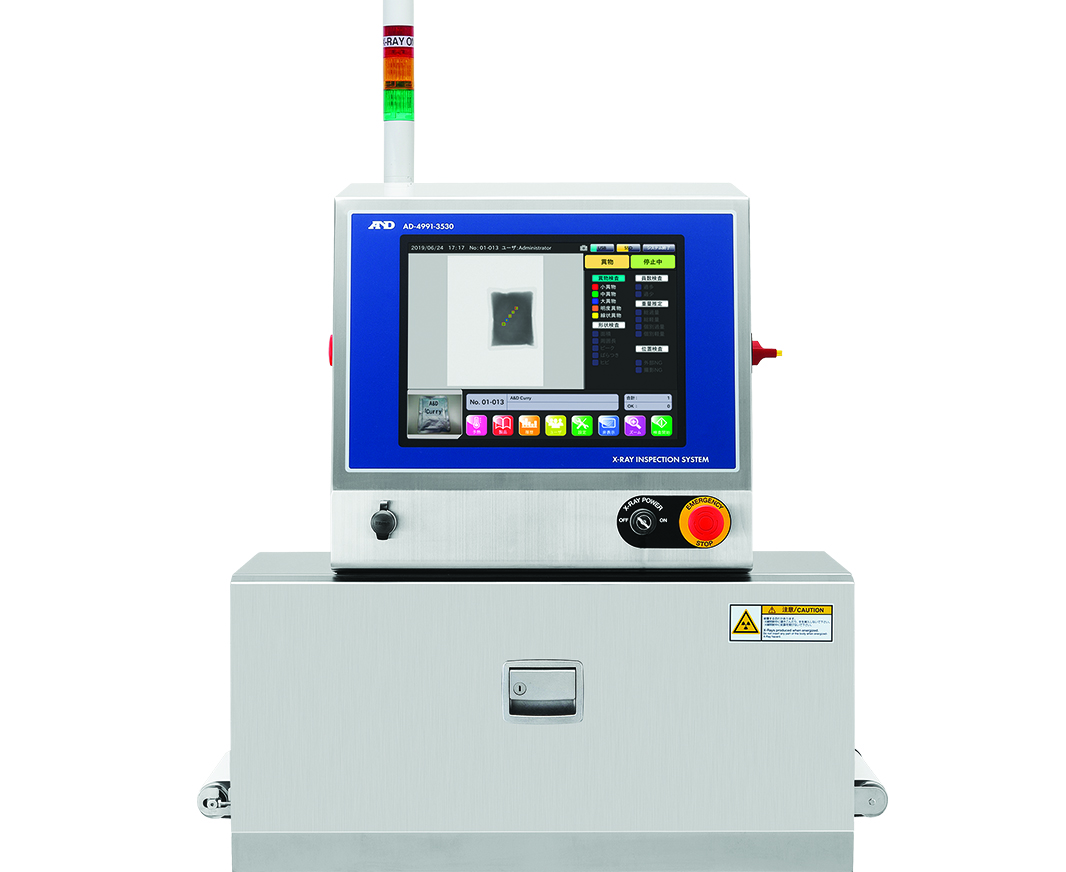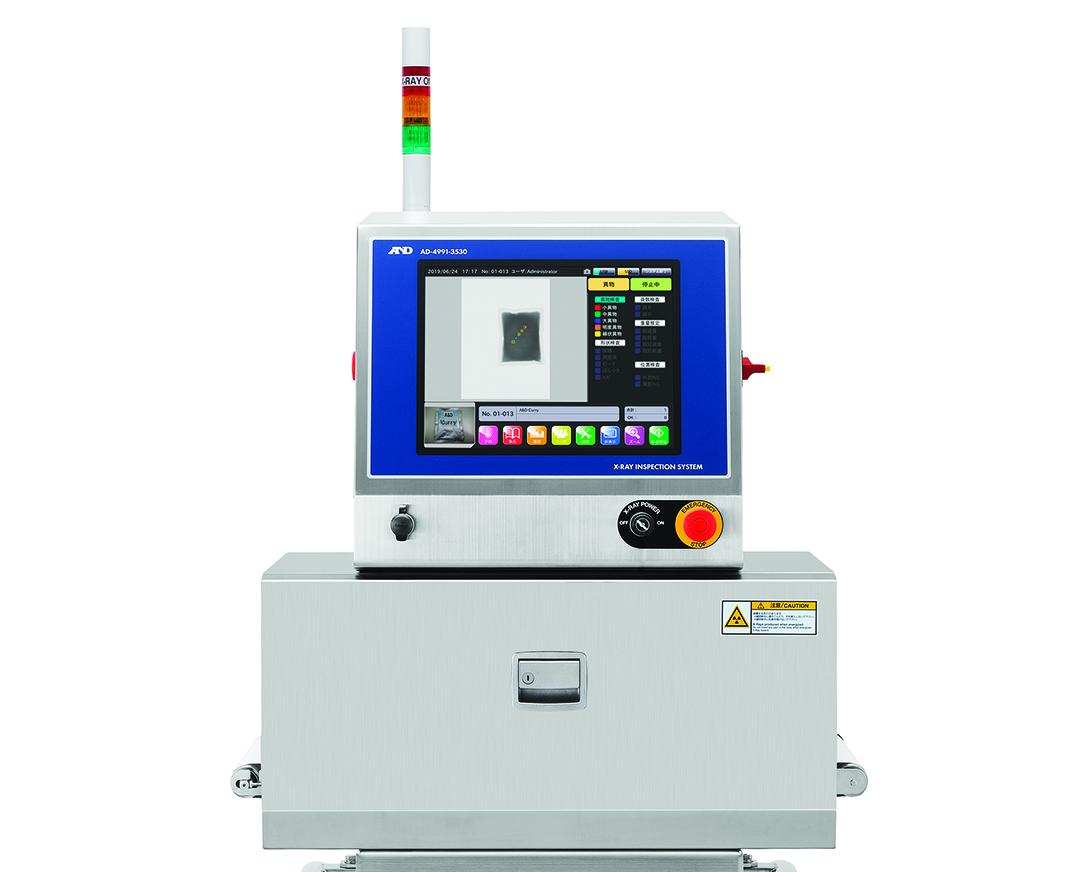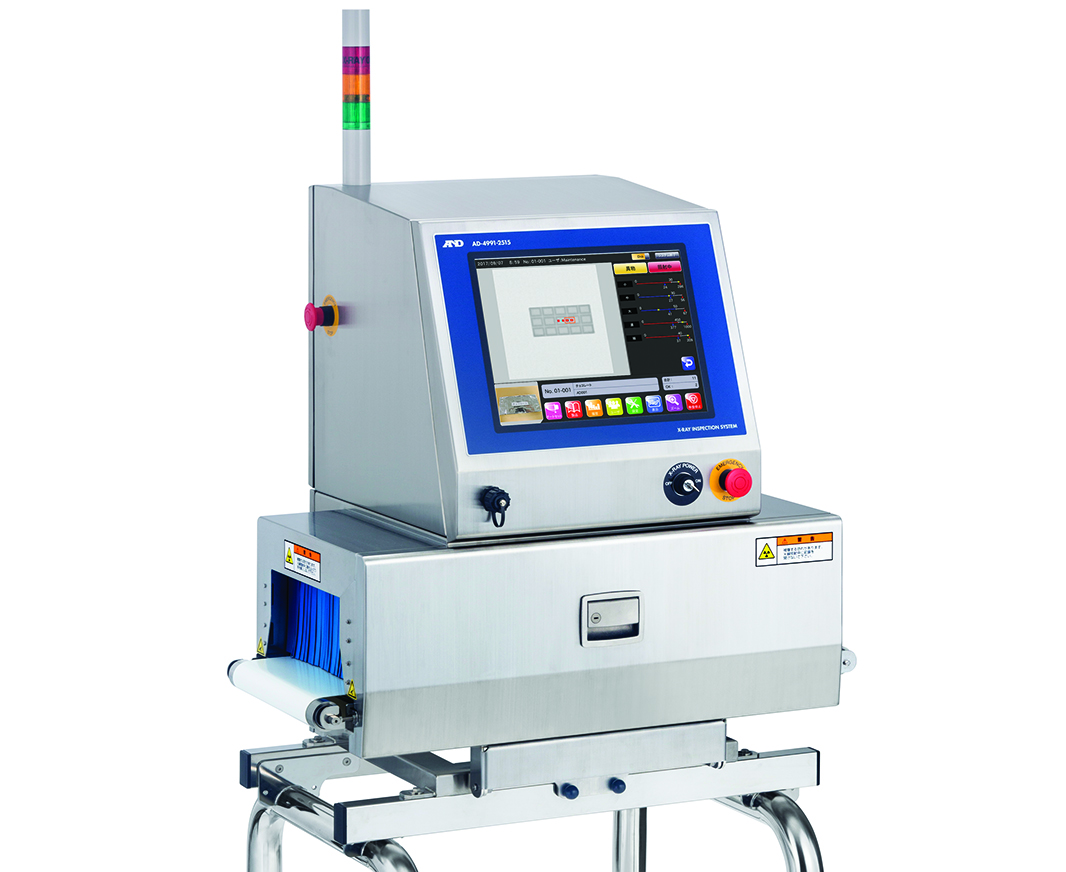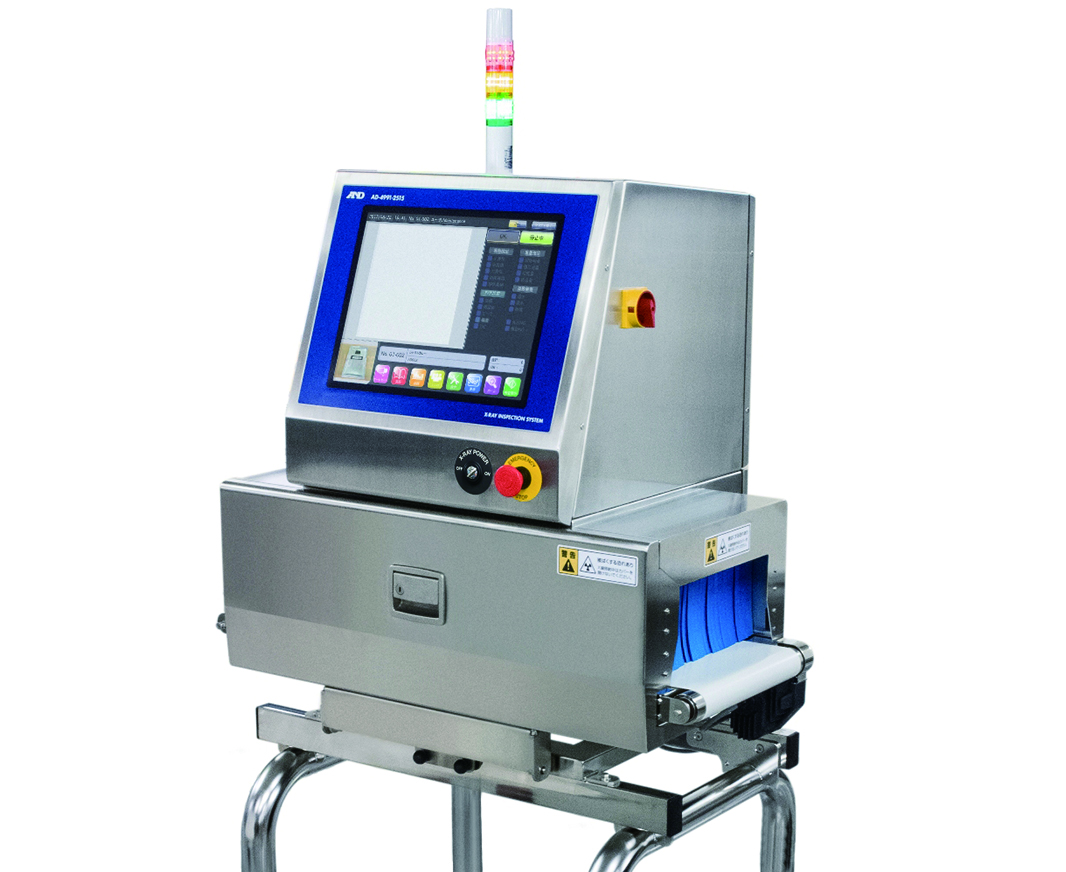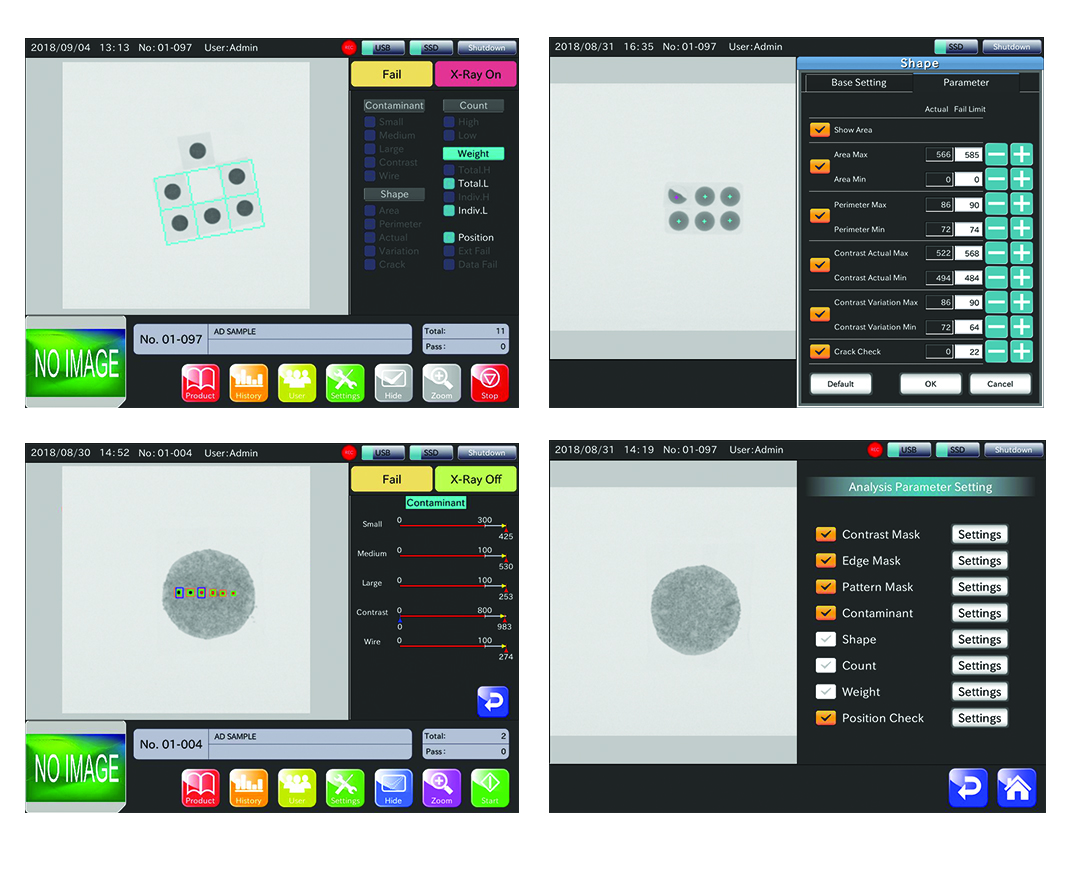ProteX X-ray AD-4991-3530
- Advanced inspection such as shape detection, mass estimation, piece counting and more
- Sanitary design complies with hygenic standards and is easily cleaned
- Most compact design allows unparalled simplicity with existing line or new integration
The ProteX X-ray series can work specifically for you to identify contaminants like plastic, metal, bone, and glass, as well as identifying missing components, misshaped products and more advanced features
Features
- Increased consumer protection
- Brand protection and recall prevention
- Food safety compliance
- Advanced Algorithms
Built for more than just contaminants, we also provide mass estimation, shape detection, and component verification -
Compact Design
Our equipment is the smallest in class to allow for easy in-line integration with minimal reconfiguration of existing equipment -
Easy to Read Display
A 15-inch color touchscreen provides users with a vibrant screen for viewing high-resolution imagery -
Streamlined Product Setup
Minimal inputs from the user makes setup and changeover quick -
Quick-ship Available
For manufacturers who need product inspection systems within a couple weeks -
Accelerated ROI
Reject classification allows the operator to see trends in real time and correct issues upstream from the X-ray. - To see the full library of Inspection videos CLICK HERE
Related Video

AD-4991 Series X-ray Inspection Systems

A&D's X-ray Inspection System

X-ray Inspection of Raw Noodle Packs
Additional Information
The ProteX X-ray inspection system provides product inspection functions that cannot be accomplished by metal detection or checkweighing.
 Missing Product Detection
Missing Product DetectionIn scenarios when the total weight of a product is acceptable, X-ray can be used to visually inspect and reject a product if there is missing product inside the package.
 Shape Detection
Shape DetectionX-ray can be used to find inconsistencies in products that should be rejected, like broken or incomplete products.
 Package Check
Package CheckIn instances where the product shifts during the packaging process, it may be important to check the seal of the product.
 Masking
MaskingProducts with clips and oxygen absorbers can be masked to check for presence and avoid a false detection.
SOME COMMON QUESTIONS ABOUT X-RAY INSPECTION
How does X-ray inspection work?
X-ray inspection systems pass high energy X-ray beams through material and the detecting result is displayed visually in image form on the HMI touchscreen display. The denser the material inspected, the darker the resulting image will be.
Contaminant results are determined by special algorithms that compare differing contrasts received from the detector.
What contaminants can be detected using X-ray inspection?
A&D excels at detecting metal, glass, stone, hard bone, and high-density plastics with our X-ray systems.
What contaminants cannot be detected?
X-ray inspection systems cannot generally detect wood, hair, insects, cartilage, and other low-density items. Given certain environments, though, some items may be detectable, so it is always best to submit the product in question for a full evaluation. Contact us to find out about what is possible in your application.
Can you detect metal contaminants in a metalized film package?
Yes. This is one primary advantage that X-ray systems offer over metal detection.
How can I be sure that a specific contaminant is detectable?
A&D offers a free sample request program. Simply send us the samples, and we will test and provide a report on our findings. Contact us to start your sample test.
Can false rejects occur in X-ray inspection?
Yes, and this is true of all areas of product inspection. To safeguard against false rejects, we have developed special algorithms that are applied during the initial product setup process. This ensures a low rate of false rejects which leads to more uptime and a faster rate of return on investment.
Besides detecting contaminants, what other inspections can the ProteX X-ray system perform?
The ProteX X-ray system is incredibly valuable to our customers because of the variety of checks it can perform, beyond just inspecting for the presence of metal. Our systems feature:
- Mass estimation (checkweigh function)
- Seal inspection
- Component verification
- Presence of inserts/oxidizer packets within a package
- A simple user interface to easily take advantage of all of these features
Are the systems safe for operators to use?
Absolutely. Our machines are designed to exceed all US and European radiation safety regulations
Are the products considered safe after traveling through the X-ray system?
Yes. The radiation dose applied to the product during inspection is considerably less than the maximum allowable permitted by the FDA.
What other safety measures are applied to your system?
We incorporate the use of various interlocks and photo sensors.
- If a safety interlock is tripped, the machine will visually show the operator on the HMI what is tripped and how to fix/reset the problem.
- The photo sensors are in place to prevent any body parts from entering the machine.
If any interlock or photo sensor is tripped X-ray will immediately stop radiating.
What about tube life?
Today’s tube manufactures typically allow for 5,000 to 10,000 hours of tube usage. However, the life of the tube also depends on several operational factors including how often the machine is cycled. It is not uncommon that tubes can also last much longer than the expected life set by the manufacturer.
Do I have to calibrate the machine?
No. Each time an inspection is initiated, the machine automatically calibrates.
However, belt cleanliness can impact performance, so please make sure that belt is routinely monitored for cleanliness.
Should I buy an X-Ray or a Metal Detector?
This heavily depends on what is trying to be accomplished and where the system will be located within a process line.
X-ray can detect everything that a metal detector can, but it also comes with a larger up-front investment. If you are deciding between the two technologies, the best thing to do is to evaluate your process and determine what likely contaminants have an opportunity to be introduced within your process, as this can often be the deciding factor.
Our team can help guide you through evaluating and implementing the right solution for your needs.
Our processing plant is limited on space, do I have room for an X-ray system?
A&D offers the most compact X-ray inspection system in its class, the ProteX. This allows minimal line changes, if any, to integrate the system to an existing line.
-
-
Model AD-4991-3530 X-ray output 300W(75kV_4mA) Conveyor width 350mm Maximum
Conveyor speed45m/min System length 800mm Conveyor height 720mm – 860mm Display 15-inch touch panel colour display Shielding curtain Tungsten Number of
recorded items10 groups x 100 subgroups Power supply single phase AC100 to 240V Maximum
Conveyor load5kg IP Rating IP66 – Inspection area only Beam Diagram 
X-ray safety Complies with FDA
Radiation Standards
21 CFR Subchapter J -
Can you detect metal contaminants in a metalised film package?
Yes. This is one primary advantage that X-ray systems offer over metal detection.Our processing plant is limited on space, do I have room for an X-ray system?
A&D offers the most compact X-ray inspection system in its class, the ProteX. This allows minimal line changes, if any, to integrate the system to an existing production line.


